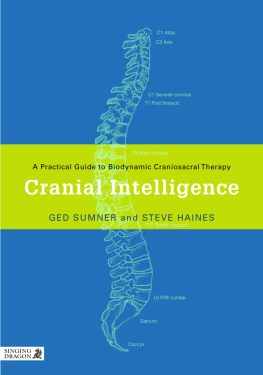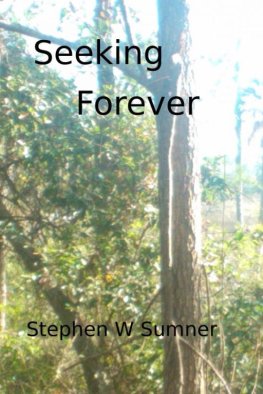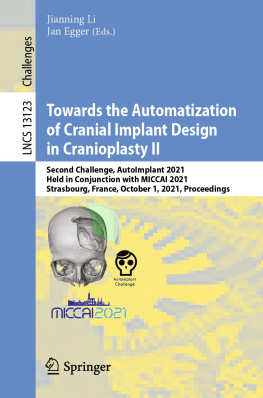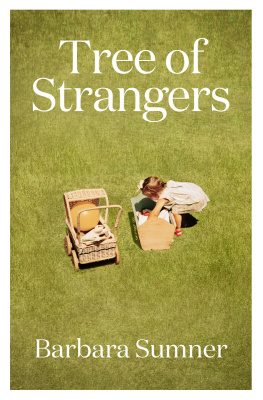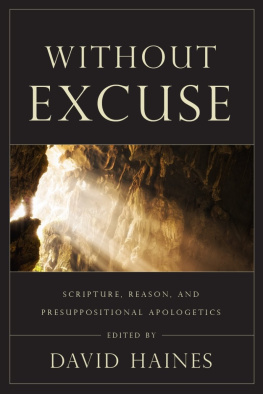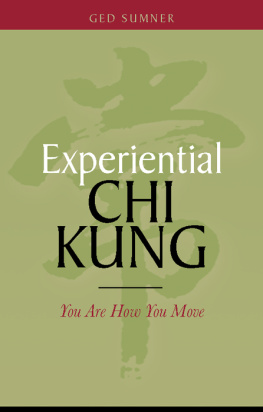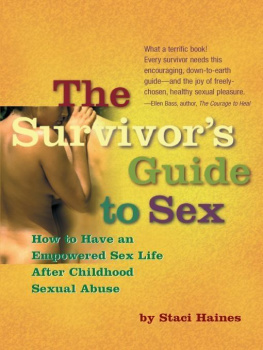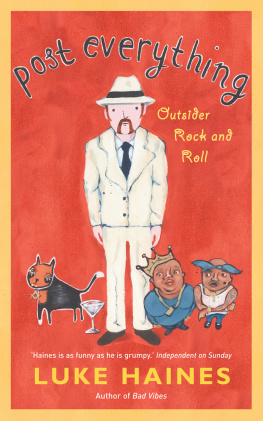Ged Sumner and Steve Haines - Cranial Intelligence
Here you can read online Ged Sumner and Steve Haines - Cranial Intelligence full text of the book (entire story) in english for free. Download pdf and epub, get meaning, cover and reviews about this ebook. publisher: Singing Dragon, genre: Religion. Description of the work, (preface) as well as reviews are available. Best literature library LitArk.com created for fans of good reading and offers a wide selection of genres:
Romance novel
Science fiction
Adventure
Detective
Science
History
Home and family
Prose
Art
Politics
Computer
Non-fiction
Religion
Business
Children
Humor
Choose a favorite category and find really read worthwhile books. Enjoy immersion in the world of imagination, feel the emotions of the characters or learn something new for yourself, make an fascinating discovery.
- Book:Cranial Intelligence
- Author:
- Publisher:Singing Dragon
- Genre:
- Rating:5 / 5
- Favourites:Add to favourites
- Your mark:
- 100
- 1
- 2
- 3
- 4
- 5
Cranial Intelligence: summary, description and annotation
We offer to read an annotation, description, summary or preface (depends on what the author of the book "Cranial Intelligence" wrote himself). If you haven't found the necessary information about the book — write in the comments, we will try to find it.
Cranial Intelligence — read online for free the complete book (whole text) full work
Below is the text of the book, divided by pages. System saving the place of the last page read, allows you to conveniently read the book "Cranial Intelligence" online for free, without having to search again every time where you left off. Put a bookmark, and you can go to the page where you finished reading at any time.
Font size:
Interval:
Bookmark:
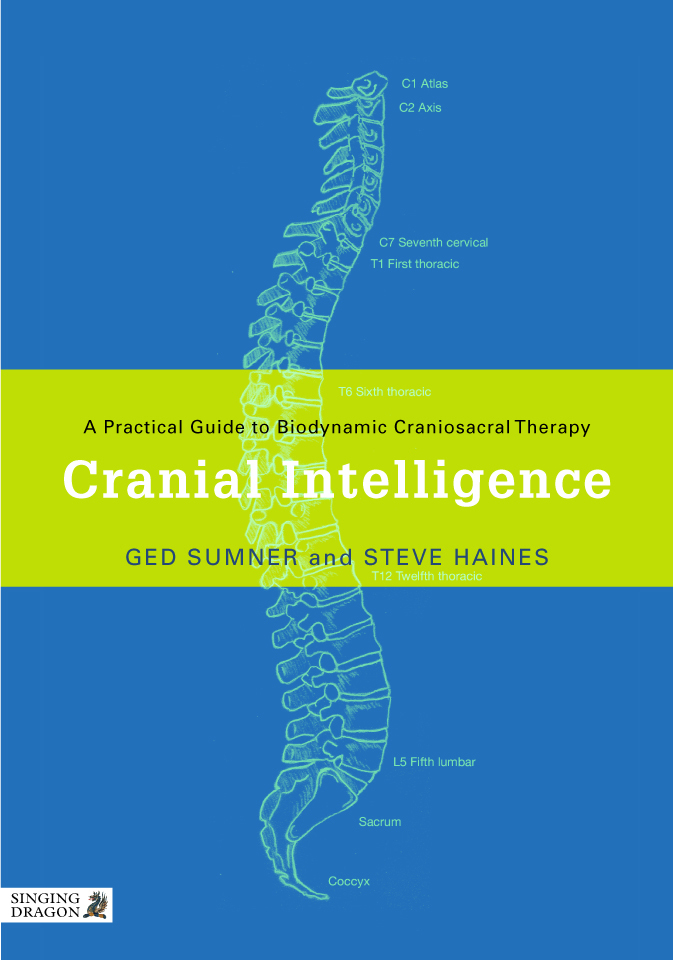
Ged Sumner and Steve Haines

London and Philadelphia
First published in 2010
by Singing Dragon
an imprint of Jessica Kingsley Publishers
116 Pentonville Road
London N1 9JB, UK
and
400 Market Street, Suite 400
Philadelphia, PA 19106, USA
www.singingdragon.com
Copyright Ged Sumner and Steve Haines 2010
All rights reserved. No part of this publication may be reproduced in any material form (including photocopying or storing it in any medium by electronic means and whether or not transiently or incidentally to some other use of this publication) without the written permission of the copyright owner except in accordance with the provisions of the Copyright, Designs and Patents Act 1988 or under the terms of a licence issued by the Copyright Licensing Agency Ltd, Saffron House, 610 Kirby Street, London EC1N 8TS. Applications for the copyright owners written permission to reproduce any part of this publication should be addressed to the publisher.
Warning: The doing of an unauthorised act in relation to a copyright work may result in both a civil claim for damages and criminal prosecution.
Library of Congress Cataloging in Publication Data
A CIP catalog record for this book is available from the Library of Congress
British Library Cataloguing in Publication Data
A CIP catalogue record for this book is available from the British Library
ISBN 978 1 84819 028 3
eISBN 978 0 85701 012 4
Converted to eBook by EasyEPUB
The authors would like to acknowledge the significant contributions made by Franklyn Sills in the development of biodynamic craniosacral therapy. He has been a major influence and inspiration for both authors. He has originated many key parts of the biodynamic paradigm and created definitions of the work that have been adopted within the field. We have tried our best to acknowledge the historical roots of the work. Any errors in interpretation are our own. The authors would also like to acknowledge the ground-breaking work of the cranial osteopaths, especially Sutherland and Becker, both of whose bodies of work this book draws upon.
The artwork was by Helena Lee and Steve Haines. A huge thanks to Helena for her essential input to the drawings and the style. A big thanks also to Viola Sampson for her clear and extensive feedback and editing suggestions on the whole of the first draft. We are grateful for the comments on chapters of the first draft from Silvia Neira, Liz Garner, Katherine Ukleja and Michael Kern.
Ged Sumner : I would like to acknowledge the key influences of Michael Kern and Paul Vick, both of whom have inspired and confirmed many discoveries along with creating opportunities to teach and support me while evolving as a teacher, plus the many conversations about the theory and teaching of the work with other senior tutors who have helped to formulate a personal clarity.
Steve Haines : I would like to say additional thanks to Francoise Wright Brown, an amazing practitioner, Katherine Ukleja, an essential source of support, inspiration and clear thinking, and Michael Kern, for the many opportunities and encouragement he has given me to develop my skills. My dad died during the writing of this book. He nicknamed it Ouch; I could never quite convince him I do more than work with pain. He would have been very happy and proud it got finished. Finally, thanks to Kate, obviously.
It seems like a long time since we started to develop a biodynamic approach to craniosacral therapy. It started back in 1986 when a colleague, Claire Dolby DO, suggested that I develop a cranial course outside of osteopathic practice that was more directly influenced by Sr Sutherlands later work. We had both met while in osteopathic college. Claire was afraid that the cranial approach was not reaching enough people and that there was a real opportunity to create a new profession. So, with some trepidation, we started the first training group at the Karuna Institute in 1987. It was only 36 days long and geared for people already practising some sort of orthodox or complementary healing form. We took a mixed approach where there was a predominantly biomechanical mental-set oriented to analysis, motion testing and various techniques geared to resolve resistance and compressive forms in the body. This was supplemented by some orientation to the fluid tide and potency, and an introduction to dynamic stillness. It also had a cathartic edge with unwinding techniques and emotional releases without a real grounding in, or understanding of, trauma skills.
At a tutors meeting in 1992 we all agreed that we were not really teaching what we were practising, which was much more oriented to primary respiration and a biodynamic approach to the work. We decided to change the curriculum at that point. It took another ten years to develop new teaching approaches and slowly change the curriculum. In this period I had to develop both new perceptual exercises and a new language for the work. This included perceptual processes that oriented students to the various levels of expression of primary respiration, new terms like mid tide, state of balance, relational field, primal midline and holistic shift and a real reorientation of student mentorship in the trainings. We also increased the course length to 50 days spread over two years. We clearly saw that it takes at least two years for students to deepen into the work and to develop the perceptual skills needed in the work. A number of us (initially myself, Claire Dolby, Michael Kern, Colin Perrow, Katherine Ukleja and Paul Vick) also taught outside England: in America, Canada, Germany, Italy and Switzerland, to name just a few places. Along with Michael Kern DO, I also helped start the Craniosacral Educational Trust in London. The various people who have taken the work out into the world have developed it in different ways, and biodynamics is a growing, developing and diverse field of work.
A biodynamic approach to craniosacral therapy entails a real perceptual shift from the patterns and conditions present within the system, to the inherent forces that organize them. The student learns to perceive primary respiration, the inherent health within the human system, and orients to conditional patterns and their organizing fulcrums within this context. Thus the practitioner orients to formative forces, not just to their effects (like strain patterns, compressions, pathologies, etc.). The most important components of a biodynamic approach includes the development of a state of presence, the ability to establish a clear and negotiated relational field, the ability to orient to primary respiration both in yourself and in another person, and the perceptual skills to orient to what is called the inherent treatment plan and to be able to track to its unfoldment with appropriate clinical skills.
I started to write new texts for the field in 1995, which were published in 2000. They were out of date from the moment they were available! I am in the process of framing new texts, but it was to my delight that Ged Sumner and Steve Haines contacted me about the new book they were producing. Both were originally trained at the CTET in London and Steve has been a tutor both on the CTET course and at the Karuna Institute, while Ged, who originally taught at the CTET, has developed trainings in Australasia. Their book provides a practical approach to the work based upon their clinical experience, with lots of exercises, a focus on embodiment and a clear orientation to the simplicity and power of a biodynamic approach. I hope their new text becomes a real resource both for trainings and in professional life. May we all continue to learn, deepen and continually clarify our relationship both to this wonderful work and to the nature of life itself.
Font size:
Interval:
Bookmark:
Similar books «Cranial Intelligence»
Look at similar books to Cranial Intelligence. We have selected literature similar in name and meaning in the hope of providing readers with more options to find new, interesting, not yet read works.
Discussion, reviews of the book Cranial Intelligence and just readers' own opinions. Leave your comments, write what you think about the work, its meaning or the main characters. Specify what exactly you liked and what you didn't like, and why you think so.

